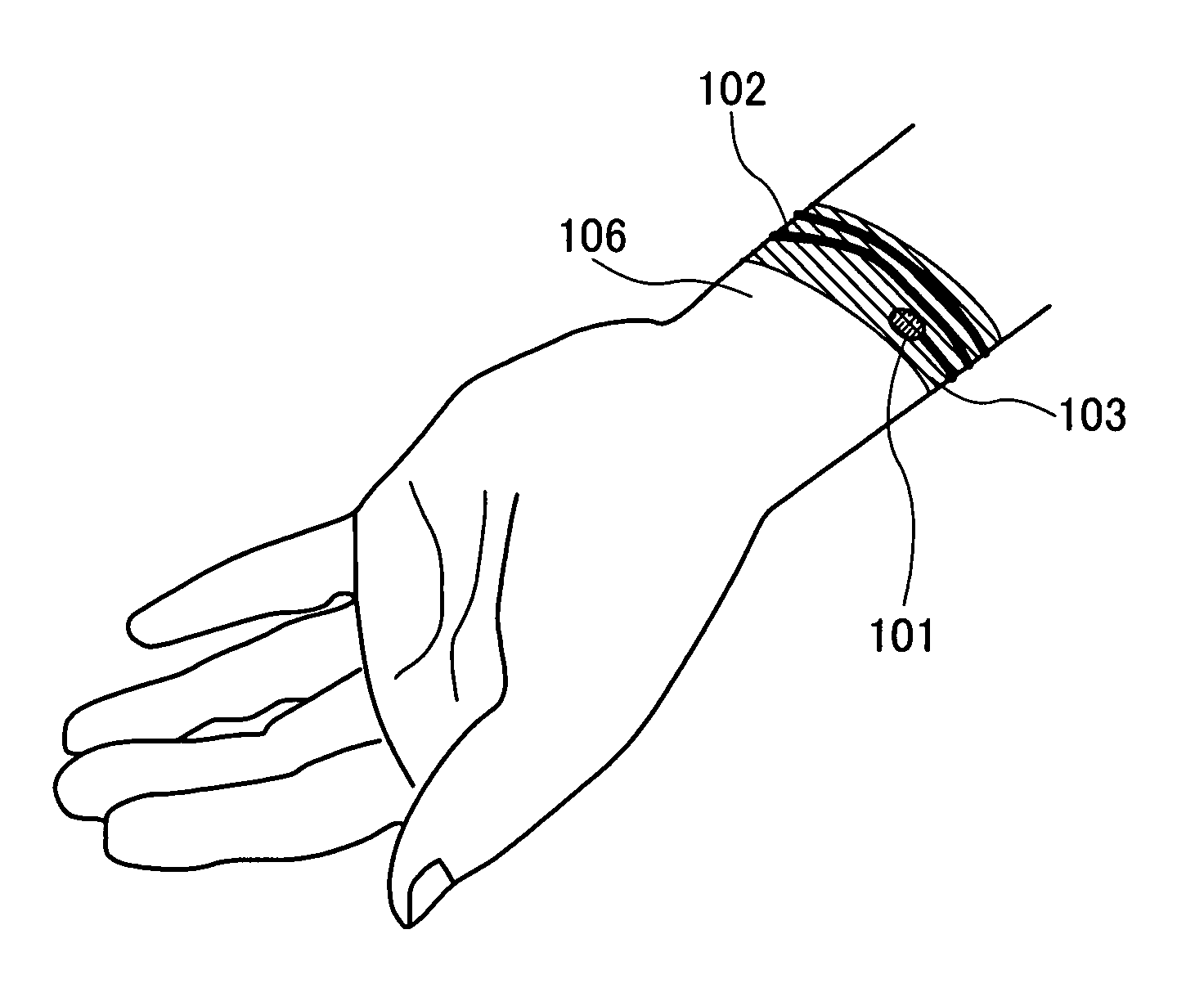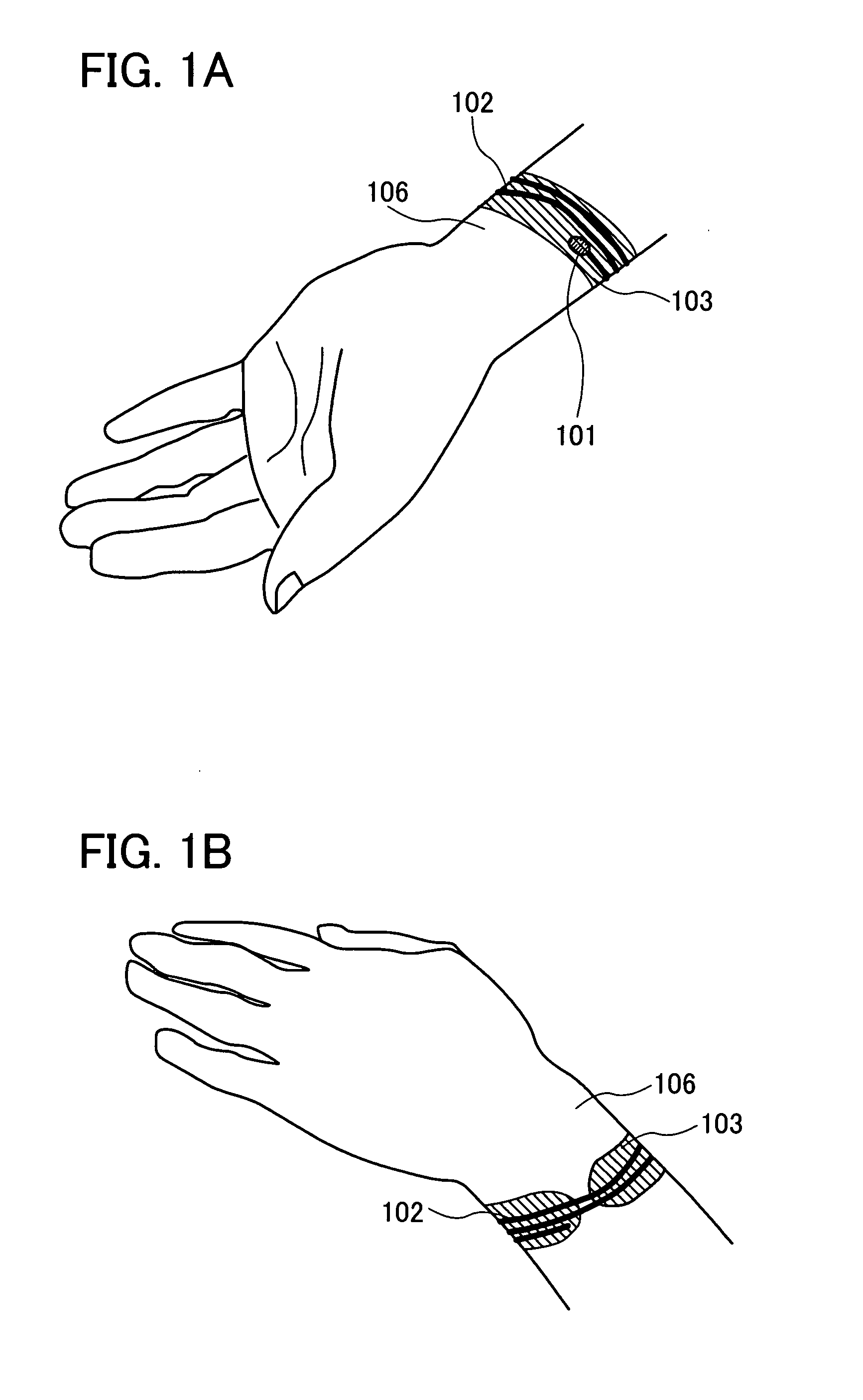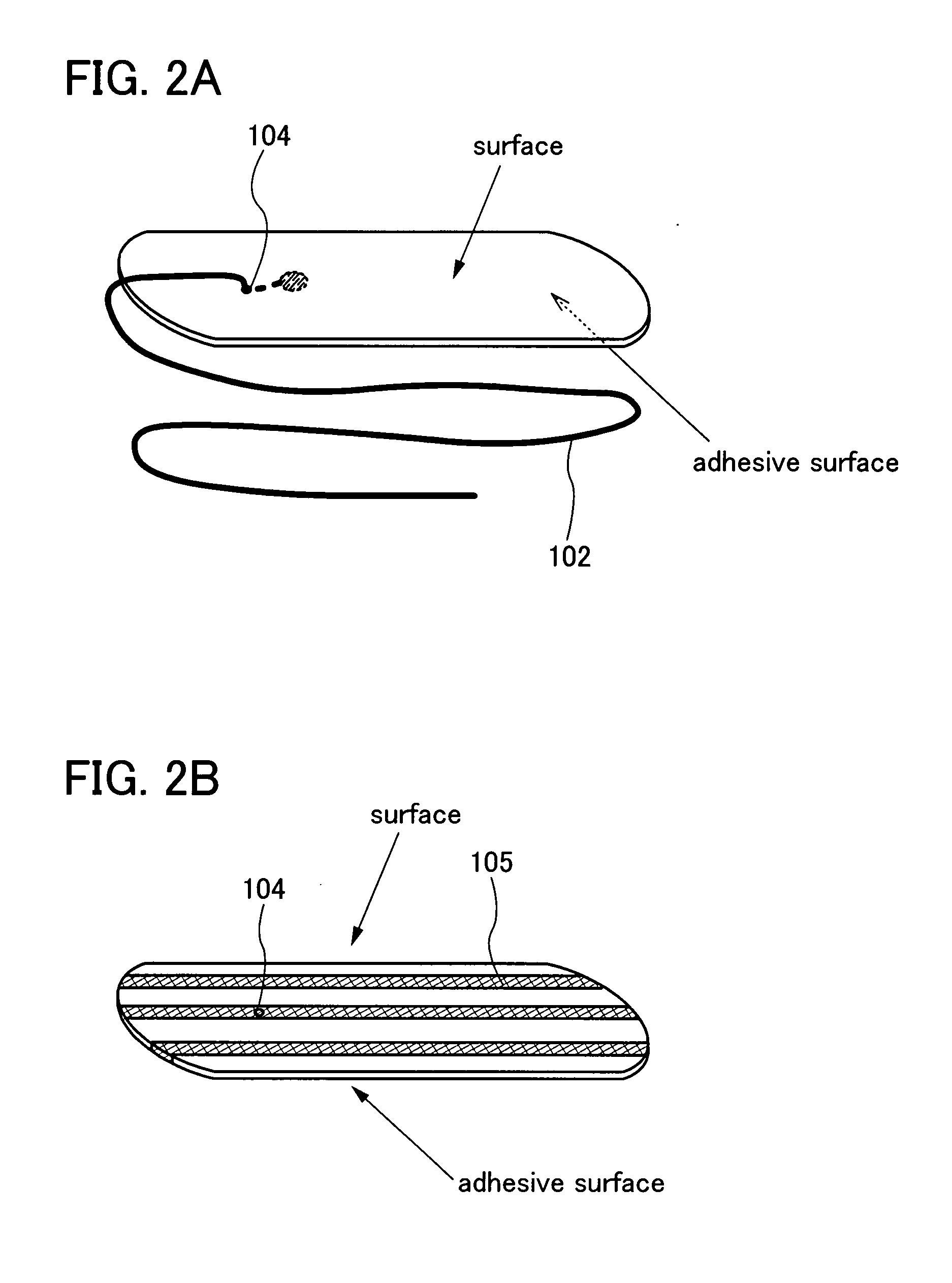Biological information detection sensor device
a biological information and sensor technology, applied in the field of biological information processing devices, can solve the problems of adverse effects on the skin of the human body, unsanitary contact of biological information detection sensors with the human body, etc., and achieve the effects of easy replacement, easy cleaning, and electric characteristic of transistors
- Summary
- Abstract
- Description
- Claims
- Application Information
AI Technical Summary
Benefits of technology
Problems solved by technology
Method used
Image
Examples
embodiment 1
[0053] In this embodiment, an example in which a biological information detection sensor of the present invention is applied to infants including newborn babies with reference to FIGS. 4A to 4D.
[0054] Newborn babies 201 (201a, 201b, 201c, and so on) lie on beds 204 placed in a nursery room 205 of a hospital (see FIG. 4A). A biological information detection sensor system 211 is attached to a wrist 202 of the newborn baby 201 (see FIG. 4B).
[0055] The biological information detection sensor system 211 has the structure described in Embodiment Mode. That is, the biological information detection sensor 212 is attached to the wrist 202 by an adhesive tape 214. The biological information detection sensor 212 is provided with an antenna 213 for sending and receiving. The antenna 213 is pulled from an adhesive surface to a surface through a groove provided in the adhesive tape 214, and is fixed to the surface of the adhesive tape 214 by a fixation mechanism provided on the surface of the a...
embodiment 2
[0063] In this embodiment, an example in which an ID chip (also referred to as an IC tag or an IC chip) is manufactured by the present invention will be described with reference to FIGS. 5A and 5B, FIGS. 6A and 6B, FIGS. 7A and 7B, and FIGS. 8A and 8B.
[0064] In this embodiment, a TFT that is insulated and isolated is exemplified as a semiconductor element; however, a semiconductor element used for an integrated circuit is not limited thereto, and all circuit elements can be used. For example, a memory element, a diode, a photoelectric conversion element, a resistance element, a coil, a capacitor element, an inductor, and the like are typically given, besides a TFT.
[0065] First, a separation layer 402 is formed over a substrate (a first substrate) 401 having heat resistance by a sputtering method. For example, as the first substrate 401, a glass substrate such as barium borosilicate glass or aluminoborosilicate glass, a quartz substrate, a ceramic substrate, or the like can be used...
embodiment 3
[0146] In this embodiment, an example of manufacturing an ID chip (also referred to as an IC chip or an IC tag) incorporated in a biological information detection sensor of the present invention which differs from that in Embodiment 2 will be explained with reference to FIGS. 9A and 9B, FIGS. 10A and 10B, FIGS. 11A and 11B, and FIGS. 12A and 12B.
[0147] In this embodiment, a TFT that is insulated and isolated is exemplified as a semiconductor element; however, a semiconductor element used for an integrated circuit is not limited thereto, and all circuit elements can be used. For example, a memory element, a diode, a photoelectric conversion element, a resistance element, a coil, a capacitor element, an inductor, and the like are typically given, besides a TFT.
[0148] First, a separation layer 602 is formed over a substrate (a first substrate) 601 having heat resistance by a sputtering method. For example, as the first substrate 601, a glass substrate such as barium borosilicate glas...
PUM
 Login to View More
Login to View More Abstract
Description
Claims
Application Information
 Login to View More
Login to View More - R&D
- Intellectual Property
- Life Sciences
- Materials
- Tech Scout
- Unparalleled Data Quality
- Higher Quality Content
- 60% Fewer Hallucinations
Browse by: Latest US Patents, China's latest patents, Technical Efficacy Thesaurus, Application Domain, Technology Topic, Popular Technical Reports.
© 2025 PatSnap. All rights reserved.Legal|Privacy policy|Modern Slavery Act Transparency Statement|Sitemap|About US| Contact US: help@patsnap.com



